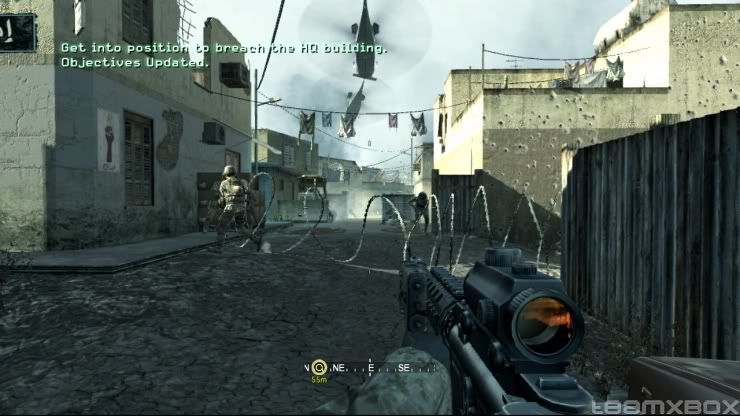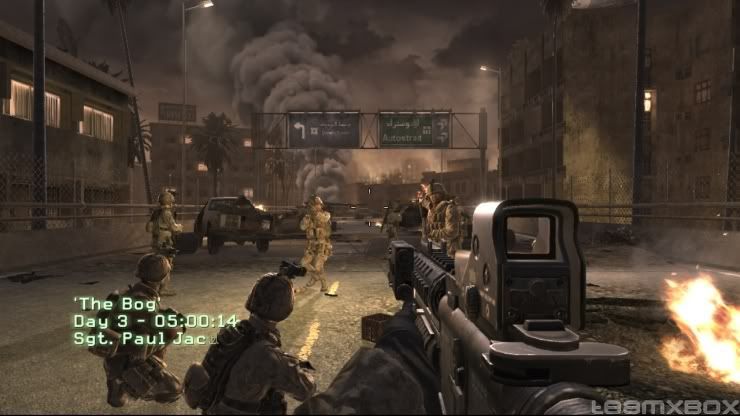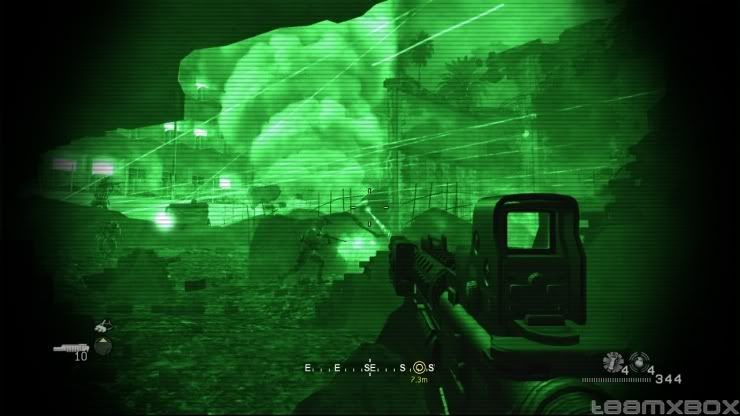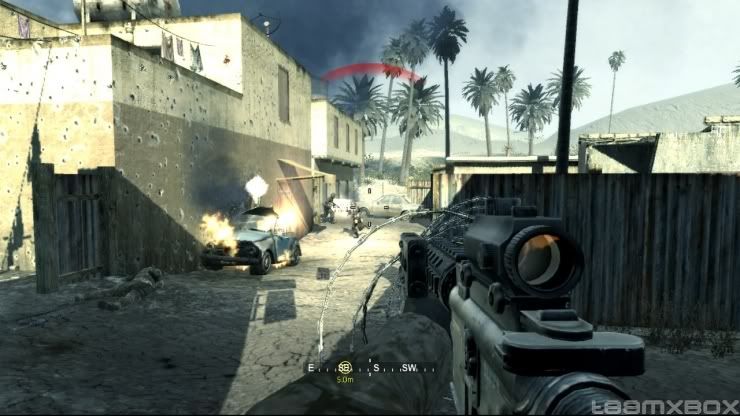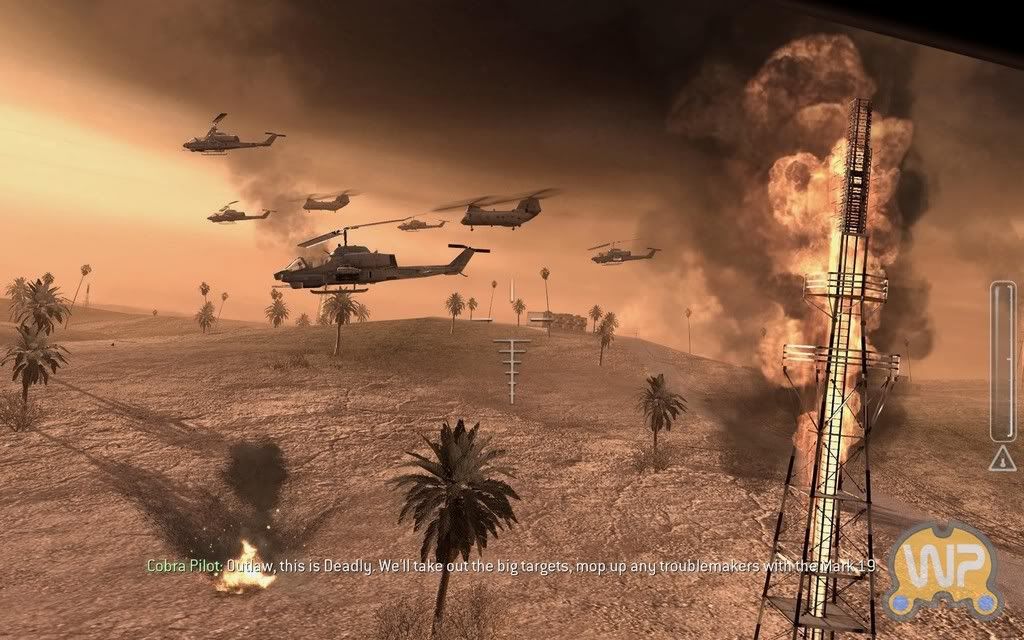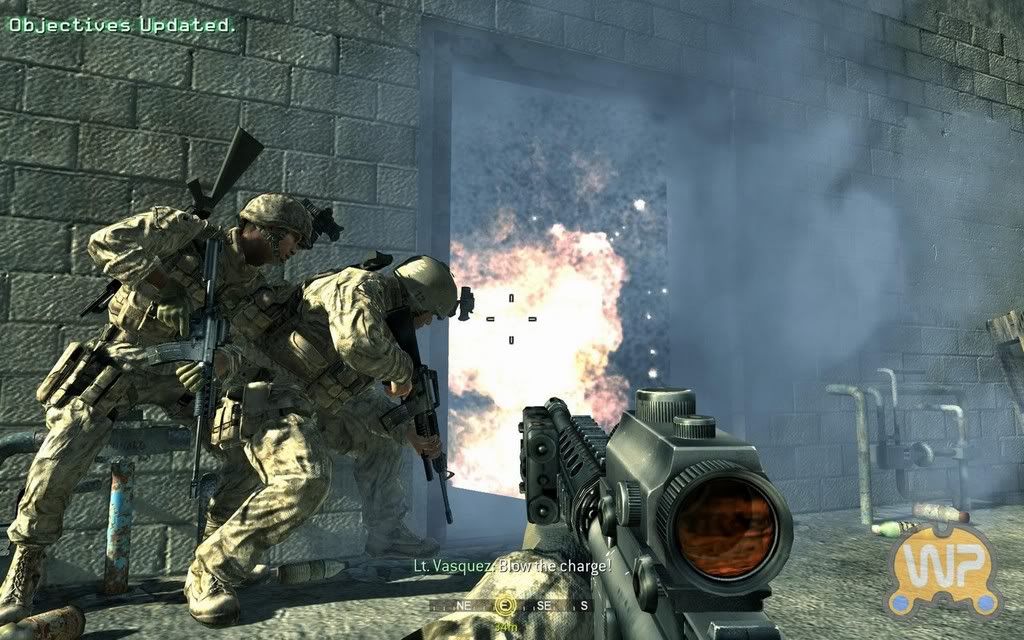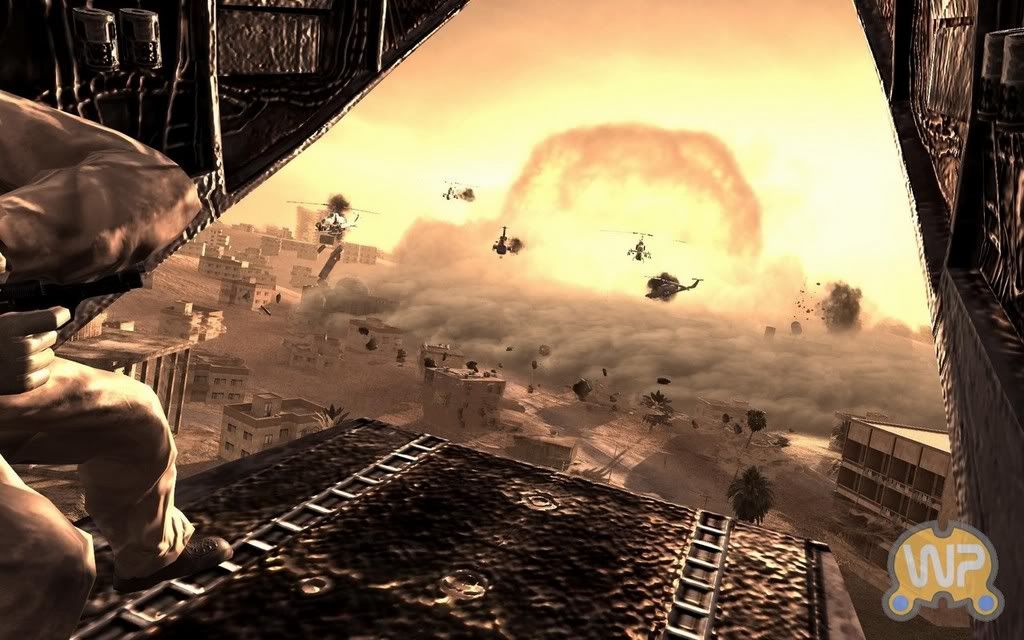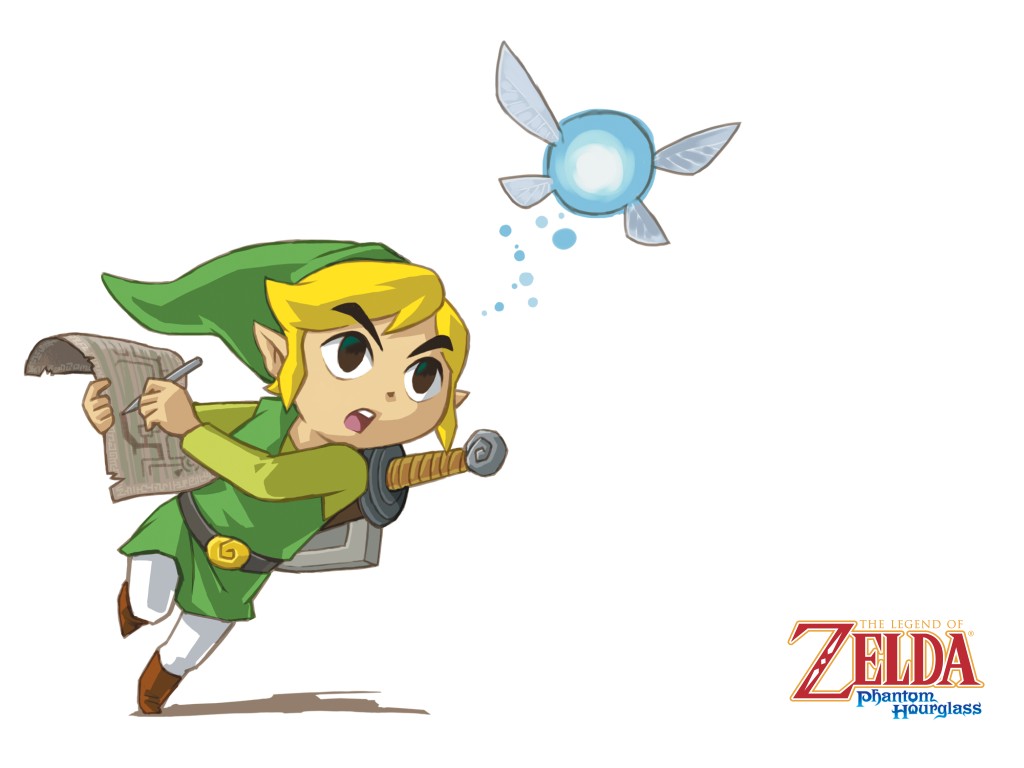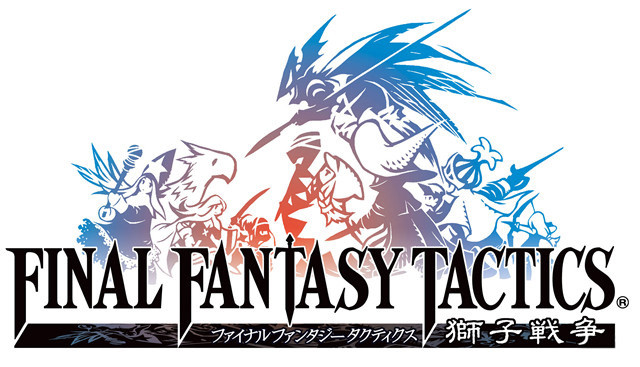
Release Date: Jun 19, 2007
ESRB: MATURE
ESRB Descriptors: Blood and Gore, Intense Violence, Language
Overview:
The Chronicles of the Villainous Umbrella Corporation have been traced back to almost a decade and they are still covering their tracks. However, in Resident Evil 4, Umbrella makes only a cameo near the end. When I first heard this, I thought "Crap! now who is going to 'accidentally' produce thousands of mindless destructive eating machines? (aside from McDonalds)" But, yet

again, Capcom has thought of another equally disturbing way to suck the player into a nightmarish adventure.
In 1996 Capcom released Resident Evil, which told a story of a deadly virus known only as the T-Virus, which transformed its unsuspecting host into a brain-eating undead. Of course it wasn't the usual "brains” they were munching, as it was any fleshy body part, fingers, eyes, intestines.... you get the point. Though our standard foes are "mindless" they aren't zombies (though they are somewhat more intelligent then some people, you know who what I'm talking about) 2005 would be the year that this new Horror was released, and then again in '07 for the next generation gaming system.
The radical new control system of the Wii involves both the remote and the nunchuk, which aids in making Resident Evil 4: Wii Edition more interactive, thus sucking the player into the fantasy world, making it at times, seem more like reality. This game is a third person action/adventure, with countless bad guys and not enough bullets. It is a standard single player action game with no chance they could make it two player. Shame, would be cool to kill zombies with a buddy. (No I don't mean, "Zombies ate my Neighbors!")
Gameplay :"1998, that’s the year those grizzly murders occurred in the Arklay Mountains..." the player is greeted with an oddly familiar character, Leon, it is a warning of what is to come. When I picked up the controller and followed along with the intro movie, I thought "another exciting adventure of bloody undead science experiments gone wrong (sorry little Timmy, you only get the Red  Ribbon for killing a city with your deadly T-virus, better luck next year)" Though the control was a little bit to be desired from what I was used to, you could say that little village at the beginning of the game acted as a good tutorial, complete with about 20 zombies and 1 very deranged man with a burlap sack on his head wielding a chainsaw...violently.
Ribbon for killing a city with your deadly T-virus, better luck next year)" Though the control was a little bit to be desired from what I was used to, you could say that little village at the beginning of the game acted as a good tutorial, complete with about 20 zombies and 1 very deranged man with a burlap sack on his head wielding a chainsaw...violently.
I would say that I am an experienced gamer, born into video games, it's in my blood. This village gave me the chills (and my control went flying across the room a few times as well.) Just like most new systems, the Wii has a few kinks; one of them is the control system. Hard to navigate and aim, it took a few deaths of which I was bitten, chomped on, hacked up with axes and pitchforks, and my personal favorite, having my head amputated (very skillfully I might add) with a chainsaw. However, I eventually got a hold of my controller and was able to continue as if it was second nature.
The great thing about what Capcom does with their Resident Evil Series is their constant upgrade with shock value. I mean they have really broken it down to a basic arithmetic: Twisted story line + Attractive Hero/Heroine + Lady speared through the head with a pitchfork or other deranged weapon = Resident Evil. There's always that person at the beginning of the games that looks like they died so painfully, it makes even the toughest of gamers cringe. This is and always will be one of Capcom’s greatest strengths.
As I mentioned above, the new system to Resident Evil 4 is very different to that of the original games. No longer can your character rotate 360 degrees with out picking up a foot. And the camera angles aren't askew as they were in the original games. The camera follows Leon around in a 3rd person action view, so that you are above and behind Leon's right shoulder, this provides for a more action-pact game, less "Survival Strategy" as its predecessors were. This new camera angling dropped the frustration that I had experienced with some of the other games of this chronicle. ( I know a few readers out there that know exactly what I am talking about.)
games. No longer can your character rotate 360 degrees with out picking up a foot. And the camera angles aren't askew as they were in the original games. The camera follows Leon around in a 3rd person action view, so that you are above and behind Leon's right shoulder, this provides for a more action-pact game, less "Survival Strategy" as its predecessors were. This new camera angling dropped the frustration that I had experienced with some of the other games of this chronicle. ( I know a few readers out there that know exactly what I am talking about.)
Another really interesting feature that came along with "awe" inspiring camera is the Reticule. The targeting in Resident Evil 4 Wii Edition came with a reticule so that it was easier to aim at your targets as they approached, (or sniped without their knowledge).
Though this system wasn't recently implemented, it was however upgraded. Players on the Resident Evil 4 PS2 edition had the wonderful task of pointing a gun and hoping that a little red dot from the gun's laser-pointer landed on his/her target and though this was a great step up from holding down R1 and firing in the direction the target was, (usually missing) this doesn't beat the Wii's reticule system by a long shot. I believe that it really proved to be a nice add-on to make the players experience more enjoyable, I mean come on, how hard is it to say "NO" to shooting a mass of zombies with a variety of guns, really...
Though it wasn't a "viral outbreak" it was however biological. As with all the Resident Evil games, there is a Logical explanation for what has happened in the story line. a virus, and alien abduction, a parasite, whatever the case may be, the hordes of monstrosities aren't dead people coming to life for no apparent reason. This is another thing that makes the overall story (and gameplay) a more entertaining experience. I have to be honest; parts of this game scared me, played at night, in the dark, alone...
However there is one down side to this game that I couldn't shake. Through all of this turmoil,  the shooting, the running, and of course the zombies dying (again) as they were threatening me, in Spanish. What I failed to grasp was WHY. Why would they set the story in a rural village in Spain? Why would the zombies be yelling "Matalo!" instead of "Kill Him!"? This to me, though it didn't take away from the gameplay or story in itself, threw me for a loop.
the shooting, the running, and of course the zombies dying (again) as they were threatening me, in Spanish. What I failed to grasp was WHY. Why would they set the story in a rural village in Spain? Why would the zombies be yelling "Matalo!" instead of "Kill Him!"? This to me, though it didn't take away from the gameplay or story in itself, threw me for a loop.
There is one very apparent problem with the games plot. The huge plot hole is who or what exactly is the Las Plagas? Through the game your following a character known as Sadler, the mastermind behind the plan, but it doesn't go so far as to show who (besides Sadler) is behind this and what ties to the Umbrella Corporation he has. This part of the game struck me as having a huge plot hole and ultimately did detract from a otherwise perfect story. In the world of creativity, there could have been so much more to this, thanks Capcom.
And lastly, I would like to add that the writers and developers of this game got a little more in depth with their character development. Though I won't spoil anything more than reviewing this game, it is safe to say that the player should expect to see more familiar faces than just Leon's, along with some new ones. Also, characters are formulated with "wit" and "sass." It was interesting to see what Leon's personality was really like after all those years. And just because the Boss is dead and the credits start rolling, doesn't mean it's over...
Graphics :I spent some time researching and studying the differences in the graphics between the Wii Edition and its forerunner, and as I did the only thing that I truly noticed is how smoothly the texturing ran together. It really does stand out further when compared to Resident Evil. And the videos/ cut scenes were really well developed (though some of the lighting made Leon look as if he was ill). But there have been serious improvements, all in the name of Graphics, in the past few years.
texturing ran together. It really does stand out further when compared to Resident Evil. And the videos/ cut scenes were really well developed (though some of the lighting made Leon look as if he was ill). But there have been serious improvements, all in the name of Graphics, in the past few years.
Needless to say, though the game was a hit on the PS2, I really think that The Wii Edition made it all the better. That’s what we should expect from next generation systems. Smoother texturing, better shadow rendering, and overall, a higher quality picture. This combination speaks miles to anyone who wants to go to the extreme with their gaming. Now we just have to wait and see what is next on the list for more media entertainment systems.
Sound :If you take an old George Romero movie like Night of the Living Dead, or Dawn of the dead ( the remake) and mute it...is it still scary? Does it still raise the hair on the back of your neck? I am going to guess the answer is "No." Just like any other work of art (Resident Evil 4) has to come together. A movie, a game, an opera for that matter, if it doesn't have a good sound track, there’s no way its going to be very good, and it is safe to say that Capcom did it again with an equally freaky sound track.
I'm not going to sit here and tell you that I am in fact a huge fan of zombie flicks, believe me that  little girl in Dawn of the Dead (2005) scared me pretty bad. But I will tell you as a horror enthusiast, that sound is everything when tying the whole package together. But with every good comes a little evil, though the soundtrack and the play (Leon’s footsteps over twigs cracking them) helped draw me in, there was some predictability to it. When our hero was being chased, there is an eerie music playing in the background, but once all the foes have been dropped, the music stopped, giving it that "It's Quite, Too Quite." feel.
little girl in Dawn of the Dead (2005) scared me pretty bad. But I will tell you as a horror enthusiast, that sound is everything when tying the whole package together. But with every good comes a little evil, though the soundtrack and the play (Leon’s footsteps over twigs cracking them) helped draw me in, there was some predictability to it. When our hero was being chased, there is an eerie music playing in the background, but once all the foes have been dropped, the music stopped, giving it that "It's Quite, Too Quite." feel.
Though this is really cool for the first hour, it does get really boring toward the middle of the game because you can then use it as a technique against the hordes of mindless neck-chompers. In my opinion, Capcom should have kept the music playing and then slowly had it fade out after a while so that when you least expect it Bam, out of the closet pours "Ted" our token zombie; it would have kept me a little more on edge. Though it had that minor glitch, I think that Capcom's zombie saga will never really have problems with their soundtrack and audio systems; they have a pretty well put together package.
Value :As yet another game in the set of the Resident Evil Chronicles, I have to say that the game did fairly well. I do know that some of other games produced as part of the same story have been flops (Code Veronica *cough**cough*) I was surprised to have this one play into my favor. The game was very successful in pulling the player into the story and making it a game that was very hard to put down. We all know that there aren't that many out for the Wii...Yet.
Overall it was a great game, one that I would play over and over, primarily due to the fact that once it is beat, just like the originals, you can unlock some of the cool costumes and new guns. You also have the unique ability to play Ada Wong's side of the story (previously a PS2 exclusive), though you only have a few "brush in's" with her in the normal story line.
once it is beat, just like the originals, you can unlock some of the cool costumes and new guns. You also have the unique ability to play Ada Wong's side of the story (previously a PS2 exclusive), though you only have a few "brush in's" with her in the normal story line.
Another wonderful thing about Capcom's Resident Evil series is the length; they are long! Something that I believe speaks miles about having a good plot. I believe it was about 20+ gameplay, for me to beat it. The best part of this game by far is its value at a retailer. At $29.99 in stores, it makes it hard to say a lot of really bad things about a game.
Final :
It's hard to beat a classic; it’s even harder when that classic is really good. But sometimes a sequel can make a difference and completely redeem some of its forerunners mistakes. It would be safe to say that good things should be coming our way from Capcom and its Umbrella Corporation, lets just see what their twisted minds with think up next...

This Zone Details >>>

 invasion of the United States of America. After all, Soviet Communism was a bankrupt political philosophy, meaning that nothing it created could succeed. Its architecture of aggression – tanks, aircraft and so on were no match to the true blue white heat of technology created by the free peoples of North America. And Soviet troops, in full knowledge of their satanic political pact were not as motivated or as well trained as the forces of Uncle Sam.
invasion of the United States of America. After all, Soviet Communism was a bankrupt political philosophy, meaning that nothing it created could succeed. Its architecture of aggression – tanks, aircraft and so on were no match to the true blue white heat of technology created by the free peoples of North America. And Soviet troops, in full knowledge of their satanic political pact were not as motivated or as well trained as the forces of Uncle Sam. That's what makes World in Conflict such a glorious treat in these days of grand strategy titles like Supreme Commander. The action here is down and dirty – where a well placed air strike provided by your close support aircraft can turn the tide of a skirmish.
That's what makes World in Conflict such a glorious treat in these days of grand strategy titles like Supreme Commander. The action here is down and dirty – where a well placed air strike provided by your close support aircraft can turn the tide of a skirmish.
 specialise. Playing with friends is a joy, teamwork is needed to get the best out of the game and World in Conflict then becomes one of the finest multiplayer strategy games around.
specialise. Playing with friends is a joy, teamwork is needed to get the best out of the game and World in Conflict then becomes one of the finest multiplayer strategy games around. This Zone Details >>>
This Zone Details >>>








